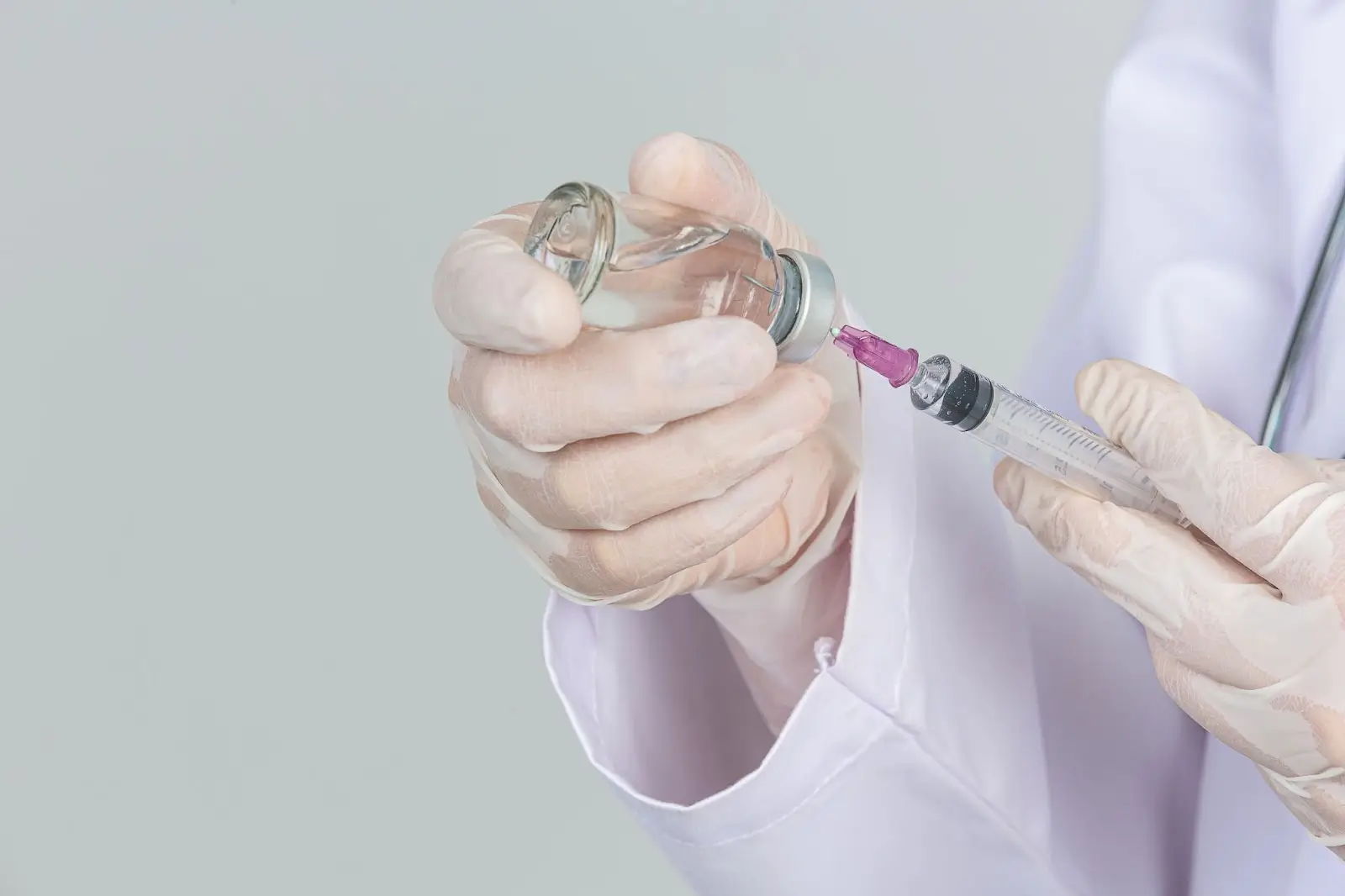
Precise injection technique is essential for effective botulinum toxin treatments. Even small errors in depth or placement can result in complications like asymmetry, eyelid drooping (ptosis), or unintended muscle paralysis. A thorough understanding of facial anatomy and meticulous dose management is critical for minimizing risks and achieving natural results.
Innotox (by Medytox) is a protein-free, pre-diluted botulinum toxin type A that arrives ready to use. This eliminates the need for reconstitution and reduces the risk of contamination or antibody formation. Innotox is stable at room temperature, unlike powdered alternatives that require refrigeration. This makes it a convenient, time-saving option, promoting consistent dosing and contributing to high patient satisfaction.
In this article, you’ll learn how to inject Innotox safely. We’ll cover injection techniques, expert tips, and key pre-treatment considerations every clinician should master for optimal results.
Key Takeaways
- Innotox is a protein-free, pre-diluted botulinum toxin type A that eliminates the need for reconstitution, offering a ready-to-use format that reduces preparation errors and the risk of contamination.
- The recommended injection techniques vary by facial zone, with precise dosages for areas like glabellar lines, crow’s feet, and the forehead to achieve natural and predictable results.
- Innotox comes in vials with fixed concentrations (4 units per 0.1 mL), which should not be altered to ensure consistent dosing and avoid over- or under-treatment.
- Post-treatment care is crucial to prevent unwanted diffusion of the toxin; patients should avoid massaging the treated areas and remain upright for at least four hours after injection.
- Thorough patient education, safe handling, and post-treatment instructions are essential for preventing complications and ensuring maximum patient satisfaction.
About: Doctor Medica is your trusted supplier of top-quality dermal fillers, viscosupplements, and more for your medical practice. We offer genuine products from leading brands at the lowest prices in the market. If you’re looking to order Innotox online for your practice, contact Doctor Medica today.
Innotox Preparation and Storage Guidelines

Proper preparation and storage are critical to maintaining toxin potency and safety.
- Temperature Control: Store Innotox between 2–8 °C and shield it from light exposure. It is essential to label each vial with its opening date and discard the vial after the manufacturer’s recommended shelf life has passed.
- Syringe Selection: Use low dead-space insulin syringes to draw doses accurately, ensuring minimal product loss and precise control of Innotox dosage. This is a unique feature of the pre-mixed formulation.
- Lot Tracking: Document vial lot numbers and patient IDs. Good storage and traceability practices enhance patient safety and ensure compliance with legal requirements in case of adverse events.
Adhering to these preparation guidelines ensures consistent product quality and dosing accuracy, enabling practitioners to achieve reliable aesthetic and therapeutic results.
Injection Techniques for Innotox by Facial Zone

The backbone of successful Innotox treatments lies in proper injection technique. While Innotox’s pre-diluted formulation simplifies preparation, precision during administration remains critical.
Each facial muscle group varies in depth, strength, and responsiveness, requiring adaptive injection approaches. Understanding these nuances is crucial for achieving smoother, more natural results while minimizing risks such as asymmetry, bruising, or muscle weakness.
| Facial Zone | Units & Technique | Detailed Description |
| Glabellar Lines | 10–25 units, intramuscular, 3–5 points | – Target procerus and corrugator muscles with perpendicular (90°) injections. – Distribute units evenly based on muscle bulk and movement. |
| Forehead Lines | 10–20 units, superficial, 4–5 points | – Inject frontalis muscle at shallow depth using 30–45° angle. – Maintain ~1–1.5 cm spacing. – Proper placement critical to prevent brow ptosis. – Adjust units based on muscle activity, especially for heavy eyelids or low brows. |
| Crow’s Feet (Periorbital) | 10–15 units per side, superficial, 2–3 points | – Use fine needle (30–32G) at 45° angle. – Target lateral canthal lines superficially to avoid orbital muscle diffusion. – Smooths smile lines while preserving natural expressions and blinking. |
| Nasal “Bunny” Lines | 5–10 units total, superficial, 2–3 points | – Treat nasalis muscle with shallow injections across nasal bridge. – Ideal for dynamic wrinkles when smiling/laughing. |
| Chin Dimpling | 4–10 units, intramuscular, 2 points | – Focus on mentalis muscle with 90° angle injections. – Tailor dose to muscle strength and dimpling severity. |
| Depressor Anguli Oris (DAO) | 2–4 units per side, intramuscular, 1–2 points | – Inject below mouth corners to soften downturned smile. – Use conservative dosing to avoid affecting depressor labii inferioris. |
Innotox Dilution Practices and Dosage Considerations
Understanding Innotox dilution and dosage is essential for ensuring both the efficacy and safety of treatment. While Innotox comes in a pre-mixed, ready-to-use format, it’s important to handle it correctly to avoid potential issues.
- Innotox eliminates the need for saline dilution, which significantly reduces the risk of preparation errors. Since the solution is ready to use, clinicians should avoid altering the volume to ensure the intended concentration remains intact.
- Each vial of Innotox contains 50 or 100 units, with a fixed concentration of 4 units per 0.1 mL. A 50-unit vial holds 1.25 mL of solution.
- Understanding this dosing metric is crucial because assuming a 1:1 ratio with other botulinum toxins, such as Botox, can lead to under- or over-treatment.
When comparing Botulax vs Innotox, the main difference lies in preparation. Botulax is a freeze-dried powder that requires manual reconstitution, offering flexibility but increasing the chance of dilution errors.
Innotox, on the other hand, offers a ready-to-use format that appeals to clinicians seeking simplified workflows and consistent dosing.
By understanding the differences in concentration, handling, and unit behavior between Innotox and other botulinum toxin brands, clinicians can better navigate treatment planning. This knowledge enhances treatment precision and builds trust and safety for patients receiving botulinum toxin therapies.
Post-Treatment Care and Troubleshooting with Innotox
Aftercare ensures the safety and effectiveness of Innotox treatments. Patients should be advised to remain upright for at least four hours post-injection and avoid strenuous exercise, alcohol, saunas, or hot showers for 24 hours to help prevent unwanted diffusion of the toxin.
Patients should also be cautioned against massaging or rubbing the treated areas for at least 24 hours to keep Innotox localized and minimize the risk of migration. If minor issues arise, such as asymmetry or bruising, they can often be managed conservatively. Asymmetry typically resolves within a week, while bruising may benefit from treatments like arnica or bromelain.
Conclusion
Delivering successful Innotox treatments requires the right balance between scientific precision and patient-centered care. Understanding Innotox’s pre-mixed formulation, accurate dosing guidelines, and tailored injection techniques ensures consistent and predictable results.
Clinicians who are familiar with the nuances of Innotox dosage can better accommodate individual variables, such as muscle strength, age, and aesthetic goals, providing more personalized care.
However, technical skill alone is not enough. Patient education, safe handling, and thorough aftercare instructions are equally essential for preventing complications and ensuring maximum patient satisfaction.
FAQs
1. Can Innotox and Botox dosing be directly compared?
No. Innotox dosage units differ from Botox and should not be converted interchangeably. Follow clinical guidelines specific to each product.
2. What is the ideal syringe for Innotox injections?
Low-dead-space insulin syringes offer optimal dosing precision and minimize waste, ensuring accurate unit delivery.
3. Is further dilution of Innotox ever needed?
No. Innotox is factory-prepared with four units per 0.1 mL. Avoid re-diluting to maintain consistency and prevent dosing errors.
4. What should patients avoid after the Innotoxx injection?
Patients should remain upright for 4 hours, avoid strenuous activity and facial massage for 24 hours, and keep the treated areas clean to enhance outcomes.
References
Kassir M, Gupta M, Galadari H, et al. Complications of botulinum toxin and fillers: a narrative review. J Cosmet Dermatol. 2020;19(3):570-573. doi:10.1111/jocd.13266.
Mayo Clinic. Botox injections. Mayo Clinic website. Published [insert publication year if available]. Accessed June 10, 2025. Mayo Clinic
Related Articles
Joanna Carr
Botox Masseter Muscle Reduction Works Treatment Review
Have an interest in learning about How Botox Masseter Muscle Reduction Treatment Works? Browse Doctor Medica's extensive archive of blog postings.
Joanna Carr
Nonsurgical Nose Treatments: Fixing Imperfections With Restylane
Interested in learning more about Fixing Imperfections With Restylane Non-Surgical Nose Treatments? Browse Doctor Medica's comprehensive archive of bl...
Joanna Carr
Jaydess MRI Safety – Can You Do Magnetic Resonance Imaging?
Jaydess IUD is a form of contraception that is a small, T-shaped plastic device inserted into the uterus to prevent pregnancy.


